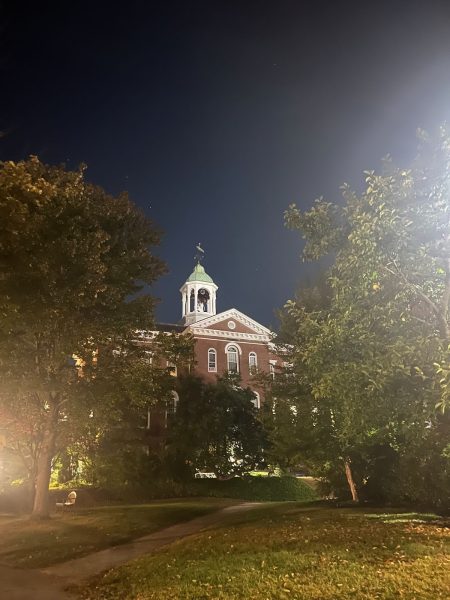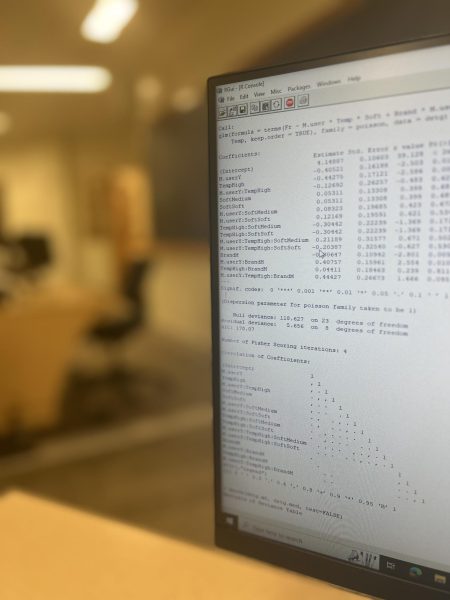Students Reconsider In-person Classes after Reading Required Waivers
Returning students will be required to sign waivers disclosing the risk factors of returning to campus and acknowledge public health guidelines limiting social interactions if they wish to live on campus this fall.
In these forms, Bates states it will test students immediately at arrival, three to four days after and twice a week during the fall semester.
Bates students received these forms on July 20 and were asked to have them signed by July 31. After reading the required waivers, some students decided not to return to Bates and to participate in remote learning, like rising junior Maria Gray ‘22.
Gray noted that she was, “on the fence about returning before seeing the waiver, but seeing as I live in Maine right now the easiest thing to do would [be to] go back so that was kind of the plan.” Gray suspected that Bates would have a similar waiver to many of the universities that had already sent theirs out, but wanted to wait and see what it would say.
However, once reading the waiver, Gray found the language “ruthless…very unsettling and disheartening and cold.” Gray was also “profoundly uncomfortable with the college refusing to acknowledge disability and illness in the student population aside from when it’s in a liability waiver.”
Gray said that what Bates is doing is similar to what the country is doing as it goes through an economic crisis: “we’re just seeing how much loss we can stomach in the name of short-term profit.”
Other students are worried how staying at home will affect life post-Bates. Olivia Whittaker ‘23 is a neuroscience major on the pre-med track. “I know that the only way to get the most out of my lab/science classes is to be in-person which means that I have to sign the waivers…On the other hand, these waivers made me feel like I was almost signing my freedom away,” she said.
Whittaker is a resident of Maine, so if campus were to close it would be easier for her to return home. However, because a majority of the student population live outside of Maine, Whittaker believes that students traveling to Maine “will indeed increase the risk of transmission.”
She feels that the testing and arrival procedures Bates is planning are expected, but worries there will be individuals who don’t adhere to the public health agreement.
Some students read the waiver and were solidified in their choice to stay home. However, other students like rising junior Jamari Amrham, who receives financial aid through work-study at Bates, are concerned about whether Bates would provide virtual work-study opportunities.
Yet, after Amrham read the waiver, he decided to do remote learning as he was faced with the question: “How could Bates look me in the face and say: ‘if you die because we couldn’t enforce certain rules, that’s your fault for coming back’ after months of assurance that it will be as safe as possible? It feels like a slap in the face by an administration that doesn’t have to interact with the school populace, while we students and faculty do.”
However, with these new waivers sent out nationwide and globally to college students comes controversy and critique.
On June 25, the Los Angeles Times published an op-ed written by Heidi Li Feldman titled: “Your college may ask you to sign a waiver for harm inflicted by COVID-19. Don’t do it.” Feldman argued that schools that have opened for in-person learning and require a waiver to sign are “assert[ing] that, in essence, students and employees who come to campuses thereby OK carelessness on the part of schools.”
Feldman emphasized that hybrid model schools cannot guarantee safety just like any other school, but “will claim that anybody who does come to campus and contracts the disease agreed to shoulder the associated risks — and so cannot get damages from the school, regardless of whether its carelessness caused illness, injury or death.”
As the summer comes to a close, colleges’ and universities’ 2020-2021 plans are largely set – ranging from in-person or hybrid plans to completely remote models. Bates, similar to Georgetown University and University of Southern California, will be adopting a hybrid model – allowing students to return to campus and participate in both in-person and online classes, but also giving students the option to complete the semester entirely remotely.
However, many schools are only allowing certain class years to come back in order to reduce the number of students on campus, like Harvard University and Bowdoin College. In other cases, schools like Brown University and Oberlin College will implement a trimester system that consists of a fall, spring and summer session in order to reduce the number of students on campus.
Dickinson College and Lafayette College, both schools who had announced plans to return in-person, have instead decided to go completely online following recent spikes in COVID-19 cases near them.
Despite the variety of plans universities and colleges all over the United States have put in place for the fall, two things are for sure – returning students will be met with a radically different campus experience than the past, and colleges will require students to assume liability for this on-campus education.
While Bates has a relatively small student population compared to most colleges, as well as access to two hospitals located within minutes of campus, this is not a guarantee for success. The success of the college’s plan is dependent upon everyone in the Bates community following the rules and regulations if Bates intends to safely keep students on campus until November and bring them back for the winter semester.
Your donation will support the student journalists of Bates College and help us cover our annual website hosting costs.

Christina Leonard is a senior from London, England, majoring in Psychology and double minoring in Rhetoric and French. At Bates, she is also involved in...

Ellie Boyle is a senior from Gary, Indiana. Something interesting about Ellie would have to be that she's a big animal lover and has raised chickens, rabbits....






